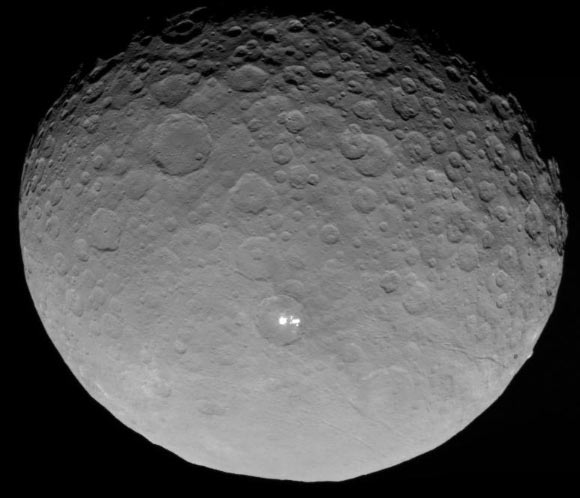NASA’s Dawn probe has returned the sharpest images ever seen of the mysterious bright spots on the dwarf planet Ceres. The images were taken 8,400 miles (13,600 km) from Ceres on May 3 and 4, 2015.

In this new image of Ceres from NASA’s Dawn spacecraft, the brightest spots within a crater in the planet’s northern hemisphere are revealed to be composed of many smaller spots. However, their exact nature remains unknown. Image credit: NASA / JPL-Caltech / UCLA / MPS / DLR / IDA.
The images offer planetary researchers new insights into crater shapes and sizes, and a host of other intriguing geological features on the dwarf planet’s surface.
“Dawn scientists can now conclude that the intense brightness of these spots is due to the reflection of sunlight by highly reflective material on the surface, possibly ice,” said Dr Christopher Russell of the University of California, Los Angeles.
According to the Dawn science team, the spacecraft has now concluded its first mapping orbit, in which it completed one 15-day full circle around Ceres while making a host of new observations with its scientific instruments.
On May 9, Dawn powered on its ion engine to begin the month-long descent toward its second mapping orbit, which it will enter on June 6.
In this next phase, the probe will circle the planet about every 3 days at an altitude of 2,700 miles (4,400 km) – three times closer than the previous orbit.
During this phase, referred to as Dawn’s survey orbit, the spacecraft will comprehensively map the surface to begin unraveling Ceres’ geologic history and assess whether the dwarf planet is active.
Dawn will pause twice to take images of the dwarf planet as it spirals down into this new orbit.







